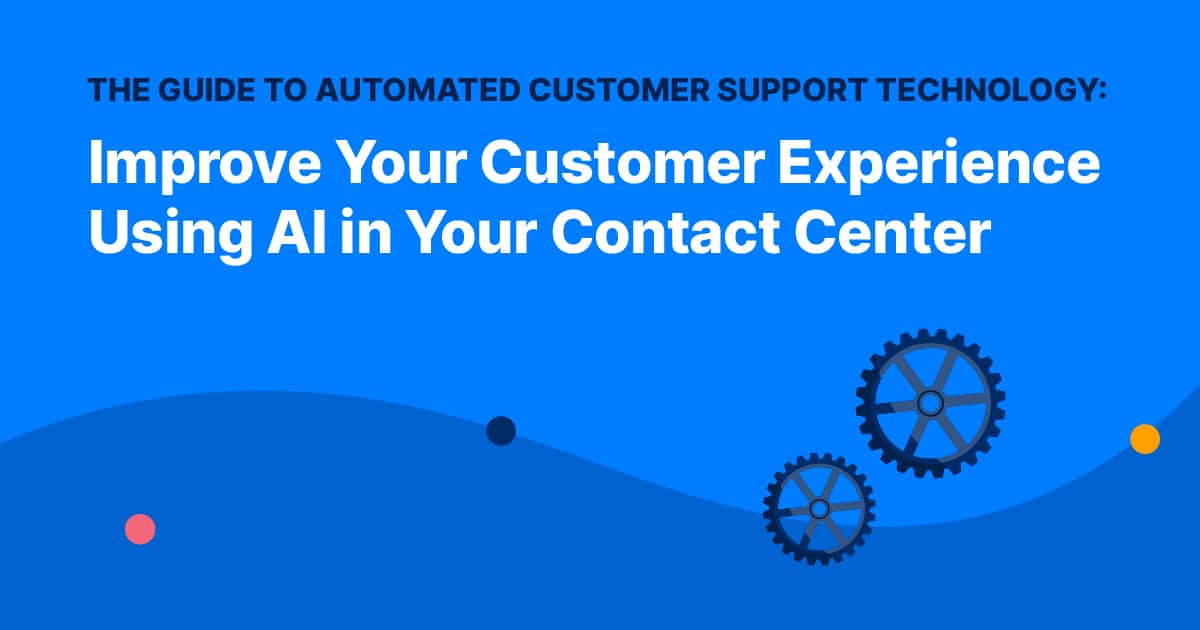In the past several years, companies have stepped up to the plate. Everyone is offering more convenience and speedier service than ever before. I still marvel that I can order a refill of hand soap on Amazon Prime and get it delivered to my doorstep within 3 hours. I expect nearly every brand to offer some form of automated support. At this point, we’re all used to immediate self-service with just a quick Google search. And with every new development in customer support technology, customer expectations continue to rise.
More than 65% of people have higher expectations for customer service today than three to five years ago. As a result, competition is fierce. Delivering effective and efficient customer support has an impact. In fact, outside of price and product, 83% of consumers cite good customer service as the most important factor when deciding what to buy.
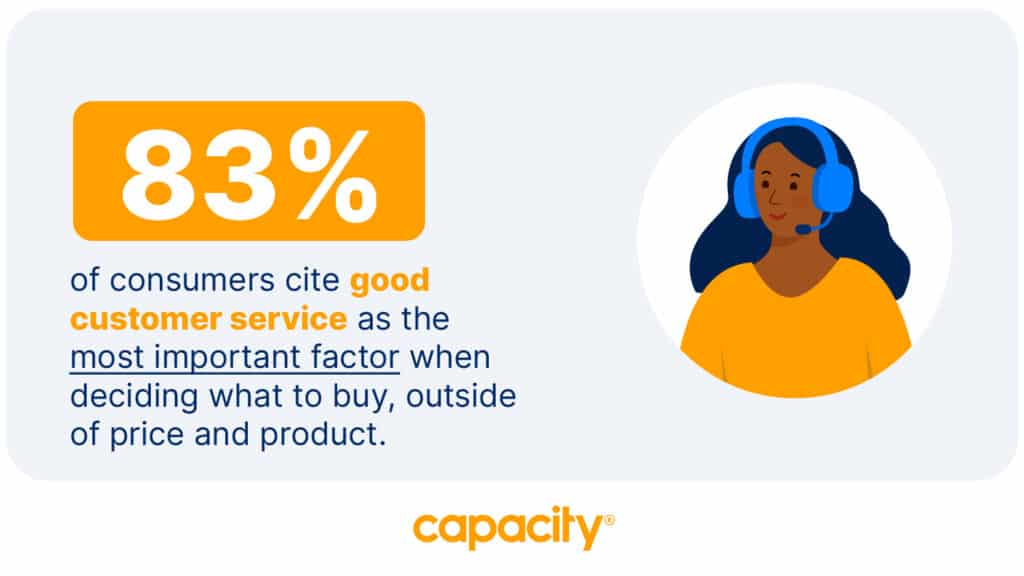
With customer support technology evolving rapidly, we’ve gathered all you need to know in this guide. Track the latest trends, prepare your team, and get ahead of the competition.
Exploring the latest trends in customer support technology
First, we have to take a temperature check to see what trends dominate the customer support industry. According to recent studies and surveys by Gartner, these are the top four trends driving the future of customer support technology:
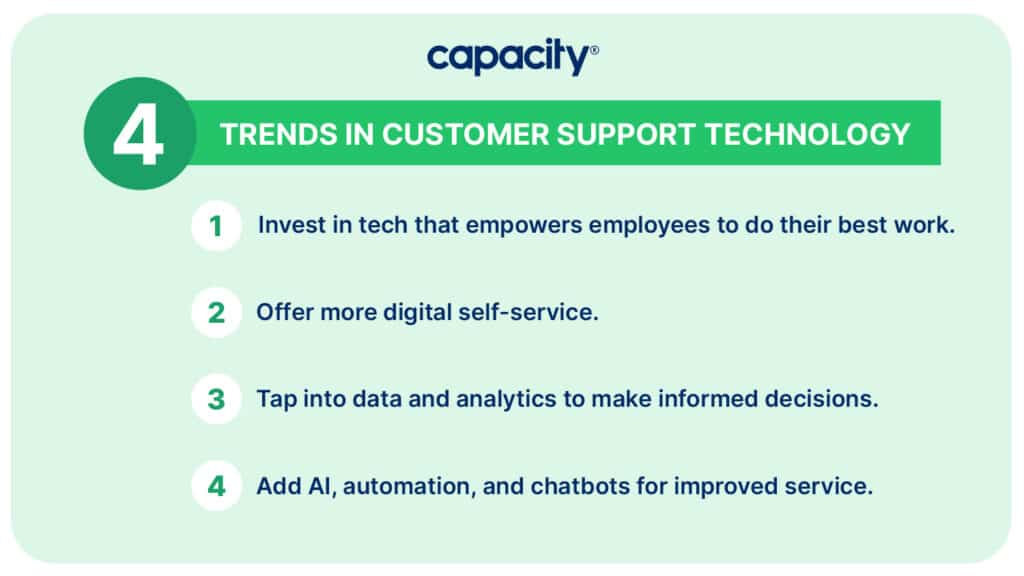
Trend No. 1: Invest in tech that empowers your employees to do their best work.
When organizations are pinching pennies, it’s often the lower-level employees who take the hit. Employee-centric tech may not seem essential. But those tools are vital for success. Invest in customer support technology that helps your employees work better, and you’ll see direct results.
Find consolidated cloud-based platforms. Invest in quality internal collaboration tools. Find unified communications that can deliver the most value to the customer service function. And add tech that focuses more on performance, monitoring, and development to support.
Trend No. 2: Offer more digital self-service.
In the coming two years, digital self-service channels, particularly mobile-friendly ones, will likely bring organizations the most value. In general, customers want to be able to type something into their browser or send a text and get the self-service tools they’re looking for. Not to mention that self-service saves you loads of money, making it easier to invest in better talent and employee development.
Trend No. 3: Tap into data and analytics to make informed decisions.
Customers today are sharing a ton of data with organizations. Every click, like, share, and purchase can tell you a lot about your customers. It’s more important than ever to gather and analyze the data flowing into your service platforms. And then use it to make decisions to serve your customers better. With strong analytic tools, service leaders can better understand and predict customer behaviors to enhance customer experience.
Trend No. 4: Add AI, automation, and chatbots for improved service.
Lastly, AI, automation tools, and chatbots are the future of customer support. Customer support leaders continue to invest in AI-powered technology to improve efficiency and help customers. There are some significant ways that AI technology is transforming the customer support industry, so let’s dig in.

Automate Your Work
Capacity’s enterprise AI chatbot can help:
- Answer FAQs anytime, anywhere
- Find relevant documents within seconds
- Give surveys and collect feedback
How AI technology is transforming the customer support industry
AI-powered technology is the hot topic in customer support today. Why? It’s not just because ChatGPT-4 was just released. It’s because AI offers a solution to some of the primary pain points for support leaders.
Real quick – let’s go over some of those pain points. In general, front-line service agents are under ridiculous stress and pressure to meet KPIs and keep customers happy. The influx of needs and requests from customers doesn’t ever end. On the managerial level, leaders have a limited budget, an overworked team, insufficient time to train their team, and outdated tech. And then they’re asked to deliver consistently amazing customer service.
Not to mention that the support industry is plagued with high turnover rates, high absenteeism, and demanding (often angry) customers. As a result, burnout is real, so keeping your employees engaged and in their seats takes a lot of work.
Whew! That’s a lot. With all that up against you, it can be tempting to peace out and quit. But don’t! The latest customer support technology can help. Here are four ways how.
Four ways automated customer support technology can improve your contact center
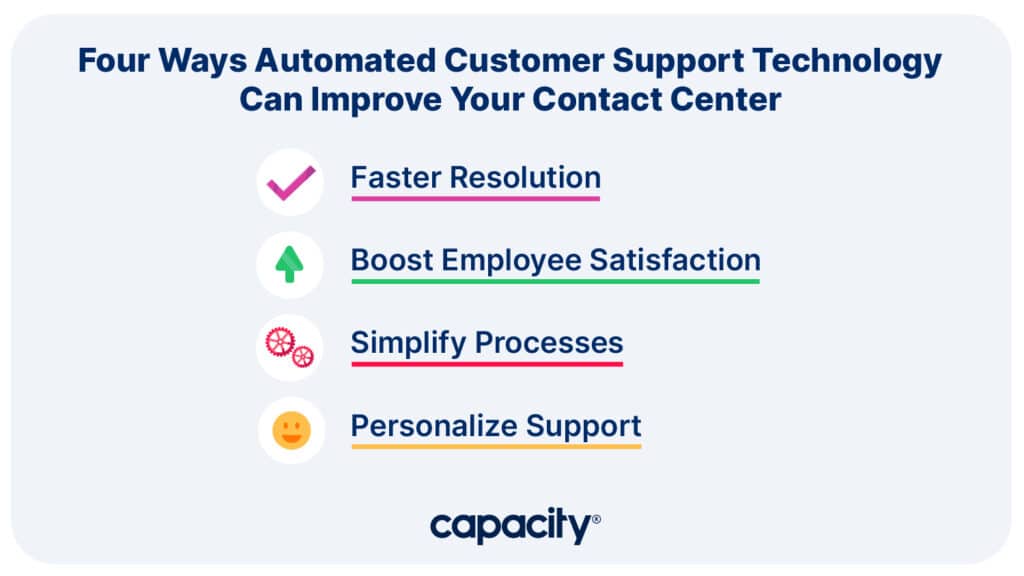
With automated customer support technology, teams can reduce repetitive, time-wasting tasks and deliver help to customers faster and more effectively. Here are four specific uses for AI-powered customer support technology in your contact center:
You can resolve simple stuff faster.
AI-powered customer support technology can significantly reduce customer wait times through chatbots. Chatbots use Natural Language Processing (NLP) to understand and respond to real-time customer inquiries over live chat or SMS. They can then answer customers’ more common and simple questions, guiding them to the right resources without human intervention.
Plus, chatbots can be available 24/7, meaning customers can receive assistance outside regular business hours. This consistency provides a significant advantage over traditional support methods, like email or phone, where customers might have to wait hours (or even days) for a response.
You can boost employee satisfaction.
Remember all I just said about burnout, turnover, etc.? With AI integrated into customer support technology, you can lighten your agent workload significantly and free them to do much more gratifying work. With automation answering the more simple customer inquiries, your agents are free to handle the complicated issues that come up with customers.
They can offer more hands-on support and spend more time with each customer. This means better help for your customers, and your agents get to use their brains, problem-solve, and build relationships with customers. And with the help of AI technology, your employees can access information faster, learning more about your product or service as they help each customer. And when your employees are more empowered to do their jobs, your customers notice.
You can simplify your processes.
If you’re in the service industry, you likely know what FCR stands for — First Contact Resolution. FCR is a pretty important metric, indicating that your team could, within just one interaction, reach a resolution with your customer. No offense, but your customers would prefer not to spend all day in back-and-forth communications with you. So the best way to keep customers happy is to simply get a ticket to the right agent the first time more often. With AI customer support technology, it’s much easier to do just that.
Let’s say agents are triaging, routing, or labeling tickets themselves. That can be slow and lead to errors along the way. Or sometimes, there are those issues that everyone avoids touching, leading a ticket to get sort of “hot potato-ed” from one department to another. But with AI, automation can take that work on and triage tickets in your helpdesk the moment they come in. When AI manages the process, it learns your human process for labeling and sorting tickets and can label issues accurately the moment they come in. The result? Simplified and speedy processes, fewer mistakes, and a far faster FCR.
You can deliver more personalized support.
AI customer support technology makes it easier to personalize your support. With AI, an agent can pull up relevant customer information to reference as they respond to a customer. This way, customer history is readily available. Service reps can look through summaries of past interactions or purchase history for a customer to offer more personalized and specific help.
Moreover, AI-powered solutions can learn from past customer interactions, becoming more intelligent over time and delivering more accurate responses across channels. The more information your AI automation tools have, the better, more personalized support they can offer your customers.
A how-to guide to training your team on automated customer support technology
Getting new technology can be a bit overwhelming. You have to pick the right vendor (by the way — you should check out Capacity!). Then you have to implement and integrate your technology with your existing systems, vet it with your security and IT team, and strategize and document all the new processes.
But effective training is essential for the technology and process to be adopted. To get you started, here are a few helpful tips for training your team on your new automated customer support technology so that you can get the most bang for your buck.
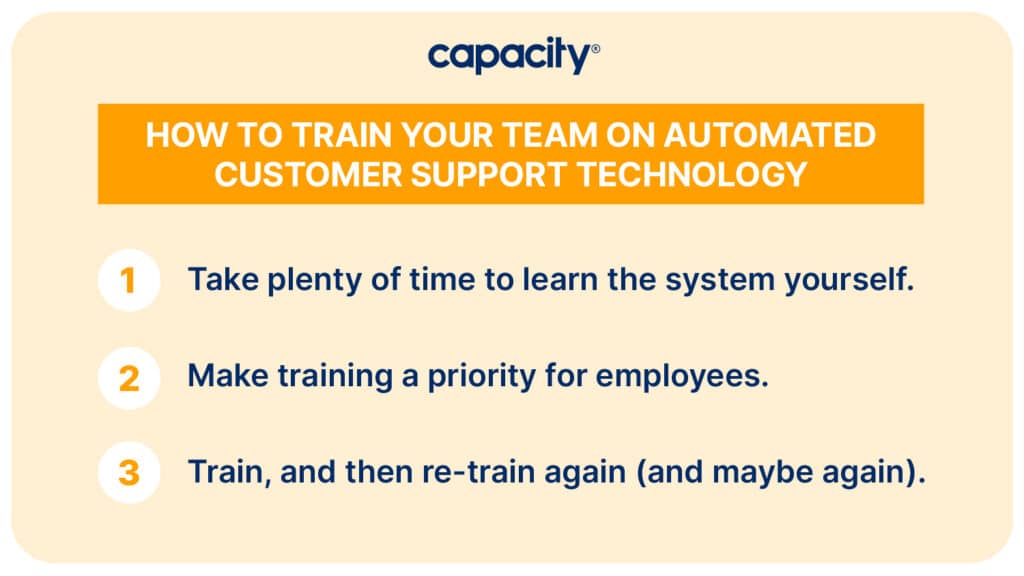
Take plenty of time to learn the system yourself.
If you don’t know the tech well, your team will never fully adopt it. Make yourself an expert by taking the time to learn the system yourself. See what resources and training your vendor offers and then load up. The technology will only be worth the investment if you know how to get the most out of using it in your contact center.
Make training a priority for employees.
Customer support teams have plenty going on each day. So it can be easy for training to fall by the wayside. You must make training a priority. Tie training to your employees’ weekly or quarterly goals, then establish clear deadlines and expectations from employees so they know when they should be fully up to speed in using it. Then, test employee knowledge with role-playing sessions or quizzes. Maybe even incentivize your team with a party or a gift card as a reward.
Train, and then re-train again (and maybe again).
It will take more than one big training session for everyone on your team to get used to automation taking over your processes. Set a regular cadence on your calendars to train, then review all the material…maybe a few times over. It may even be worthwhile to return to the training a month or two following implementation to identify what is and isn’t working.
The more you invest in implementing and adopting your customer support technology, the more success you’ll see long-term in your operations and customer satisfaction.
Ready to see if automation is right for your contact center? Try Capacity for free!











































